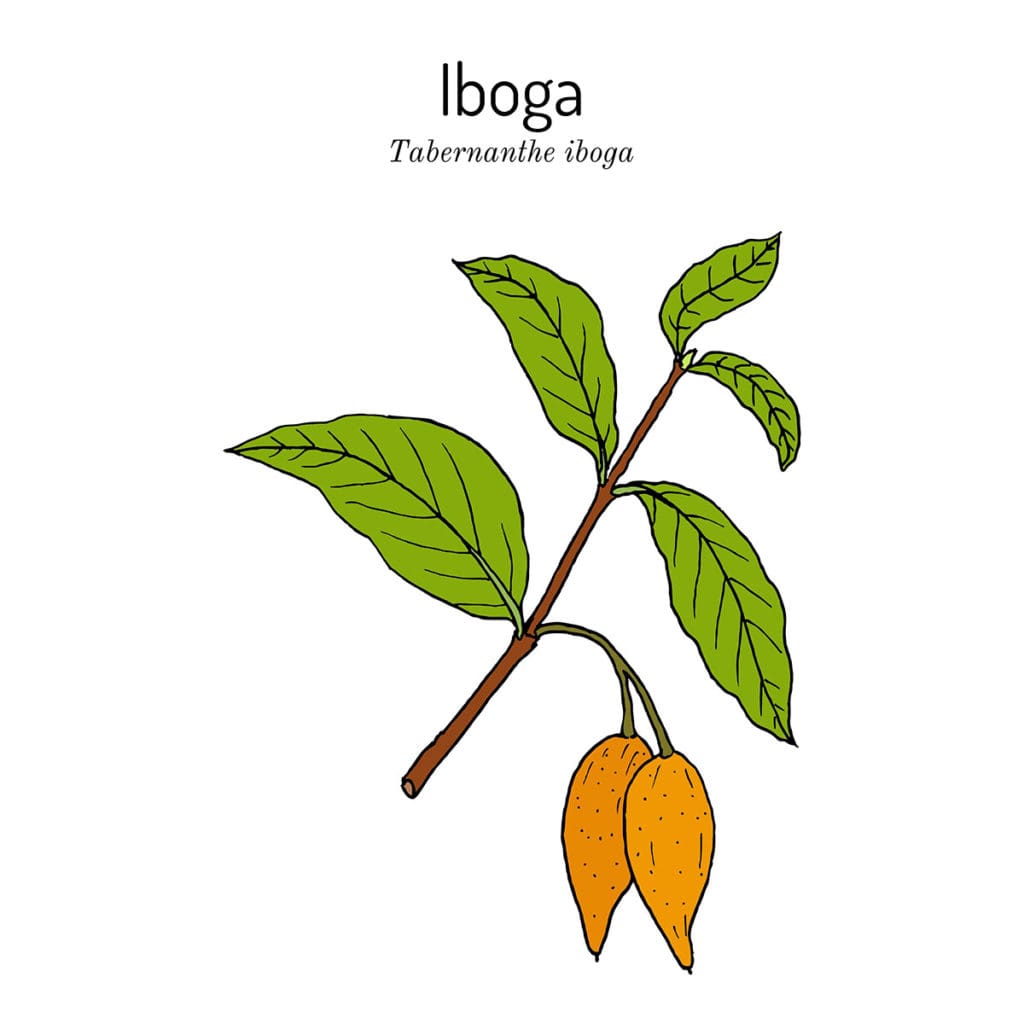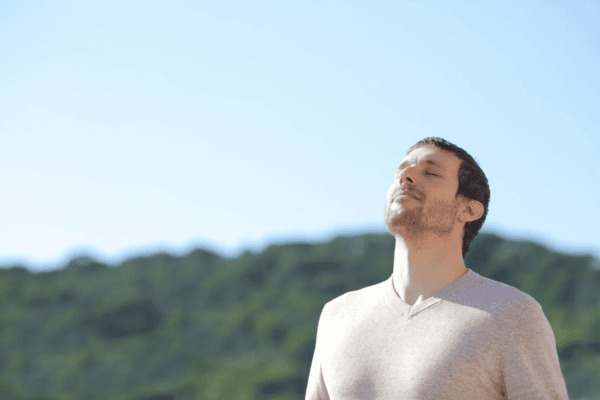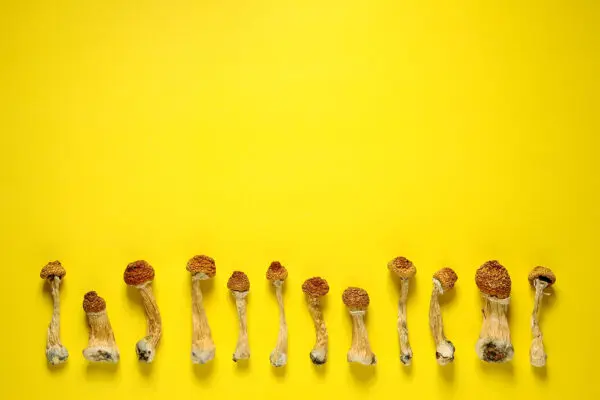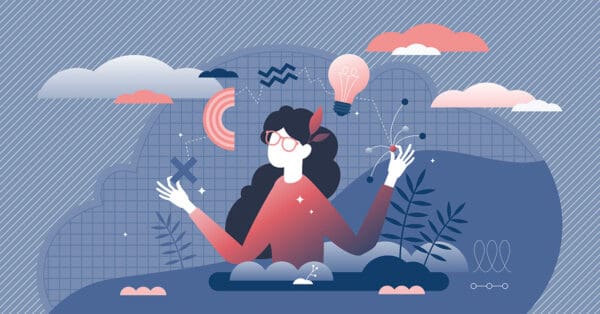Medical Editor: Dr. Benjamin Malcolm, PharmD, MPH, BCPP
Ibogaine is an alkaloid found in the root of the Tabernanthe iboga plant. T. iboga has a long history of use in western Central Africa as sacrament for rites of passage by the pygmy people, Fang and Mitsogo Bwiti cultures. In recent years, ibogaine has been receiving more attention in the media as well as clinical research studies for its ability to treat opioid dependence.
The iboga plant is facing extinction due to habitat destruction and unsustainable harvesting driven by increased demand for ibogaine. Buying from poached sources also often means the extraction methods were rushed, which may mean lack of quality and purity in the final product. Check out Blessings of the Forest to learn more about iboga sustainability.
A rising trend in psychedelic and mainstream culture is microdosing, or taking a non-hallucinogenic, often sub-perceptual amount of a psychedelic drug. Recent surveys of microdosing suggest benefit for reduction of depression, however the available studies suggest a placebo effect. While there is no clinical research on microdosing iboga or ibogaine for therapeutic benefit, anecdotal stories tout its effectiveness in addressing the symptoms of a range of conditions, including dissociative identity disorder and major depression, as well as promoting abstinence from opioids, and providing increased energy and creativity.
Shea Prueger, ibogaine provider and director of Ibogaine Revelations, says that microdosing ibogaine may also address peripheral neuropathic pain, fibromyalgia, ruminating and/or intrusive thoughts – specifically in those that are diagnosed with OCD, and symptoms from some auto-immune diseases (like chronic Lyme disease), as well as an overall sense of well-being. Substance users have reported that microdoses eliminate post-acute withdrawals from long-acting and synthetic opioids, as well as eliminate cravings that have resurfaced months after their ibogaine treatment.
Unfortunately, microdosing ibogaine has not been scientifically studied, so interested users should proceed with extreme caution and weigh risks against potential benefits.
The mixture of Ibogaine with some psychiatric meds, including SSRIs, can lead to adverse medical events. A history of disease, health concerns, and cardiac issues increases risk considerably. Ibogaine has been fatal at doses as low as 4mg/kg with adverse events occurring in even lower doses. Unpleasant medically noteworthy side-effects have been documented in doses as low as 3mg and 10mg. One article calculated a dose of 0.87mg/kg ibogaine to be ‘safe’. Even in microdoses, cardiac changes and prolongation of the QT/QTc intervals occur, which raises risks of arrhythmias.
Risks of Microdosing Ibogaine
Using ibogaine at a psychedelic macrodose or “flood” dose involves serious medical risk. Sources on the internet estimate that one in four hundred users suffer a fatal reaction from ibogaine, some due to preexisting medical conditions. Future fatalities may be prevented with proper screening and monitoring, although deaths have occurred even in clinically monitored settings.
While the lower doses associated with microdosing could translate into reduced risks, caution and medical advice should still be heeded. Certain conditions will put someone at a higher risk of complications. Similarly, the list of medications that contradict with ibogaine is long. Speaking to a provider about what one needs to come off of is the safest route to take. Below is a list of some of the most dangerous medications or drugs to combine with ibogaine.
Types of Contraindicated Medications
- Drugs that slow heart rates or are used to treat arrhythmias (e.g. beta-blockers)
- Drugs that prolong QTc intervals (e.g. methadone)
- Long-acting opioids (e.g. methadone, buprenorphine, oxycontin)
- Stimulants (e.g. cocaine, methamphetamine, MDMA)
- Drug that inhibit liver enzyme CYP2D6 (e.g. fluoxetine, paroxetine, bupropion)
Anyone interested in iboga or ibogaine should get an electrocardiogram (EKG) and a liver panel before microdosing. Long QT syndrome, history of arrhythmias, heart murmurs, and other cardiac conditions are contraindicated with ibogaine use. Electrolyte imbalances can be dangerous with any size dose. Other conditions such as non-drug-induced seizure disorders such as epilepsy, respiratory conditions, some severe gastrointestinal conditions, liver impairment, as well as some psychiatric conditions may exclude someone from ibogaine ingestion. Individuals with morbid obesity may also be at greater risk for adverse events.Those with hepatitis C, HIV, blood pressure problems (or taking blood pressure medication) and a history of alcoholism should be screened thoroughly by an experienced facilitator. Individuals diagnosed with schizophrenia, a history of psychosis; including some individuals that have been hospitalized due to manic states may be at risk for exacerbated symptoms of their diagnoses as well as psychosis and acute confusional states following ibogaine ingestion.
As you can see, screening for ibogaine safety is both important and complex: A provider can consult with those interested in microdosing to make a safe plan for moving forward with dosing. For a more detailed look at medical complications and screening protocols for ibogaine, check out the Manual for Ibogaine Therapy Screening, Safety, Monitoring & Aftercare, co-authored by Howard Lotsof, a pioneer in the field of iboga therapy for substance use disorder.
There’s also the inherent uncertainty in purchasing ibogaine. There’s generally little access to tests that establish content and purity, so there is no good way to know the strength of the product, and if the product is pure iboga, iboga extract, ibogaine, or something else entirely.
Anecdotal reports indicate that cardiac changes and a prolonged “grey day” may occur with daily ibogaine microdosing. “Grey day” is lingo that describes the day after an ibogaine experience. While some have compared the grey day to the low mood, low energy, depleted feeling some experience on an ecstasy come down, the mechanism of action with ibogaine is quite different. Prueger says that people tend to feel better after they get some good sleep and get away from their dosing.
Iboga and ibogaine remain schedule I substances in the US, thus risks associated with illicit drug use can also apply. Some cities have decriminalized naturally-occurring psychedelics, including ibogaine.
A skilled practitioner with experience microdosing should be able to effectively screen a prospective microdosing client as well as monitor the side-effects and experiences of each dose.
Potential Benefits of Microdosing Ibogaine
Macrodoses of ibogaine are most commonly used in treating opioid dependence with promising results. Ibogaine is unique among psychedelics in that it appears to effectively block symptoms of opioid withdrawal, while providing a subjective experience that enhances insight into their drug use and fortifies resolution to change. Therefore, microdosing ibogaine may be a helpful way to promote continued abstinence and recovery after an initial or larger dose that interrupts addictive behaviors.
Anecdotes indicate that ibogaine microdosing in the weeks and months after a flood dose experience can support continued abstinence from substances and can help people avoid the spiral into negative thought loops or behaviors. One individual described ibogaine microdosing as facilitating a “bird’s eye view” on situations that may need further clarity for the individual.
“I send most of my clients who have a history of drug use home with a handful of microdoses with the intention that it may help them get through a challenging or triggering situation or period that may arise after arriving home,” says Prueger. “I always have a handful of clients that are currently utilizing microdoses to assist in maintaining their sobriety. Some individuals feel that they want to dive deeper with their process and shed more layers so that they can effectively tackle the reasons for their drug use effectively. Most of my clients agree that microdosing effectively eliminates cravings, assists in getting perspective on challenging situations, and helps their mind remain clear.”
Environmental factors like seeing people associated with the addiction (ie friends, partners) can trigger old thinking patterns and cycles that lead to relapse. Microdosing after receiving the benefit of a full dose may help maintain sobriety, curb cravings, promote impulse control, and keep an outlook of hope.
Microdosers of ibogaine have also reported increased self-acceptance, self-compassion, and a sense of agency in one’s own healing. Improved energy, focus, and concentration have all been noted.
How to microdose ibogaine
Finding a starting dose for microdosing ibogaine is tricky. Individual response, risk of an adverse reaction, or even fatality can vary dramatically from person to person. Some ibogaine facilitators and coaches will not give a set amount for people to microdose with because of the tremendous variability between people and between products. All the same, for people desperate to heal themselves from opioid addiction, the risks of using ibogaine pale to the chances of an overdose.
The safest way to microdose is to work with a reputable ibogaine provider at a medically supervised clinic. Alternatively, finding an ibogaine provider who can assist individuals with pre-screening, reading one’s medical tests, and planning a dosing strategy while also checking in with the individual day by day is safer than microdosing alone. However, in general, starting with a very low dose, moving slowly with and between repeated doses, and monitoring how you feel (including monitoring of health vitals) is crucial. Ibogaine is rapidly converted to it’s long-acting metabolite noribogaine in the liver. Noribogaine is eliminated from the body slowly and can linger even after ibogaine is undetectable, leading to potential prolongation of QTc intervals for multiple days after ibogaine ingestion. Therefore, if ibogaine is administered daily, or even every other or third day, there’s potential for the substance to accumulate in the user’s system and also greater potential for unpleasant side-effects and cardiac risk. To avoid accumulation or stacking of doses, microdoses of ibogaine may need to be administered every 96 hours or have break periods even further apart.
Prueger explains that ibogaine is not a one size fits all medicine. “I have seen the QT interval prolong, persistent vomiting, and even cardiac abnormalities such as inverted t-waves occur in clients we have utilized microdosing with. In the world of ibogaine, 30mg ibogaine hcl is technically a microdose. I think we mix up dosing terms a lot and people are actually booster dosing or taking low or even sub-flood doses at their own risk at home.” It may increase safety to get another EKG done while microdosing ibogaine to verify the QTc interval has not lengthened to the point that dangerous arrhythmias could occur. Persons that are considering starting new medications or supplements while microdosing ibogaine should have them vetted for safety before adding them to their regimen.
Microdosing is a long and subtle process. Due to the risks of cumulative dosing, reaching the user’s intentions and reasons for microdosing requires patience and vigilant safety practices.
Conclusions
Microdosing ibogaine is most frequently used to promote continued abstinence and recovery from addiction after larger doses and success with initial ibogaine treatments. Given the risks and medical complexity of using ibogaine, persons with depression or other ailments commonly targeted by microdosing may be better off and safer using other psychedelics such as psilocybin or LSD.








